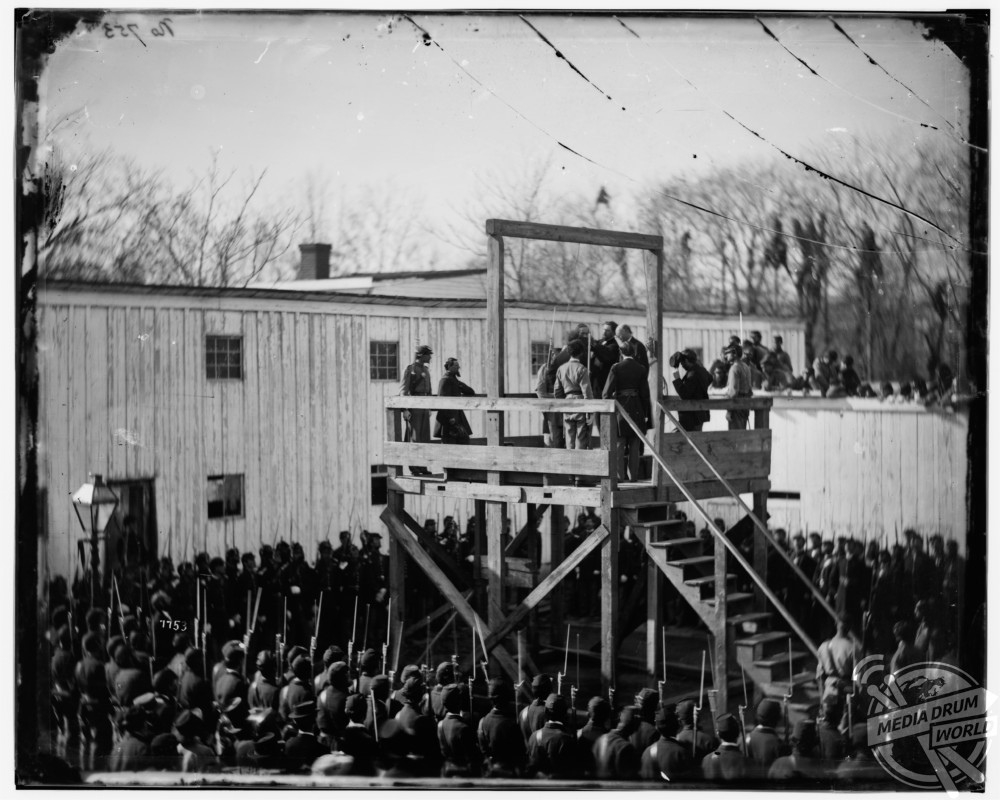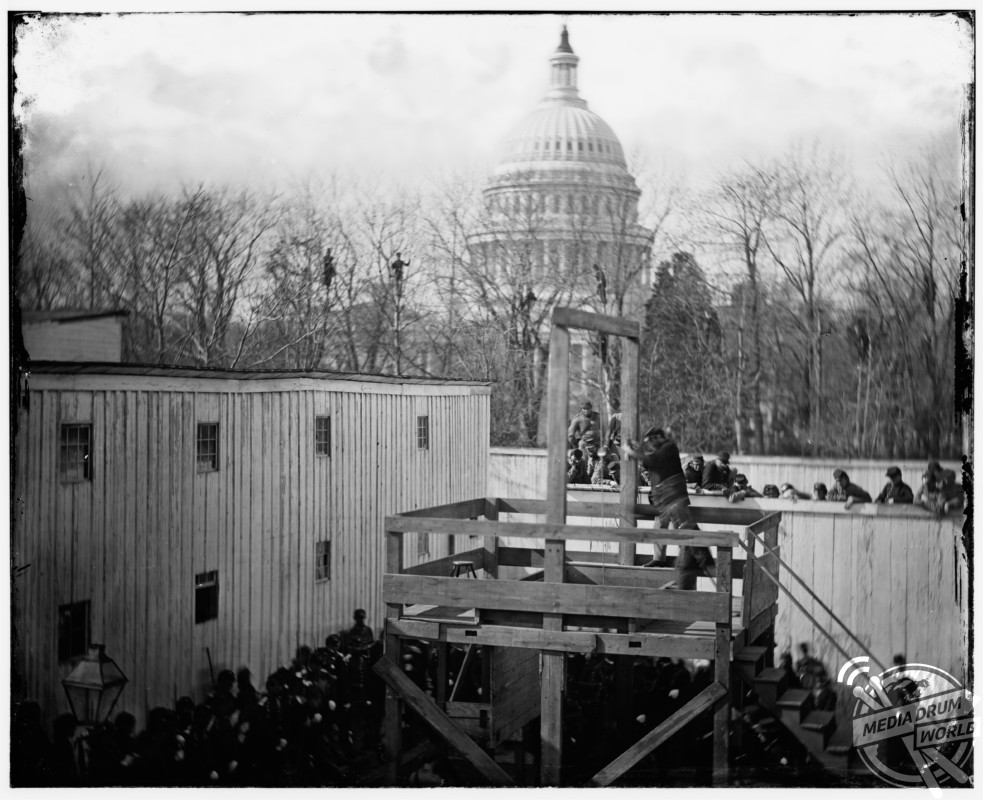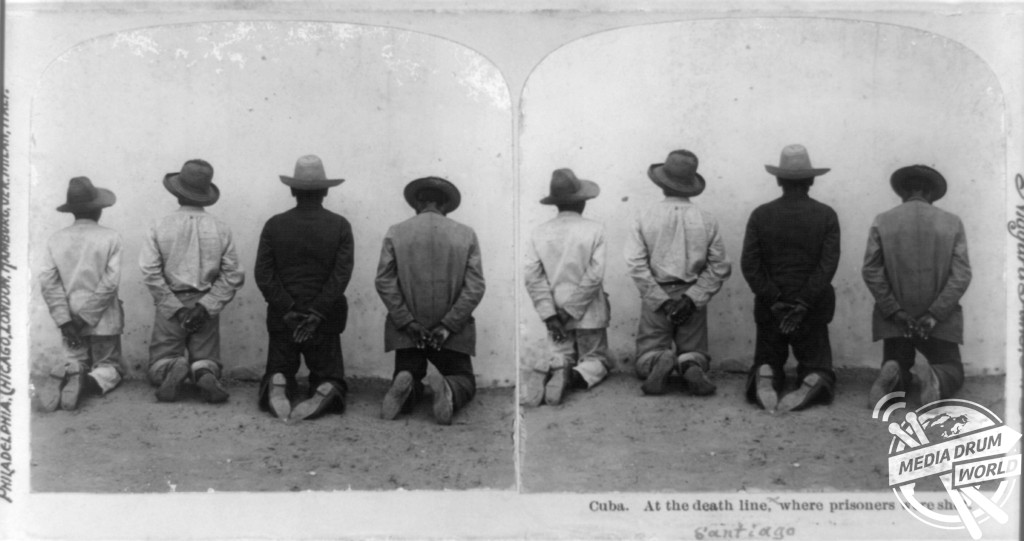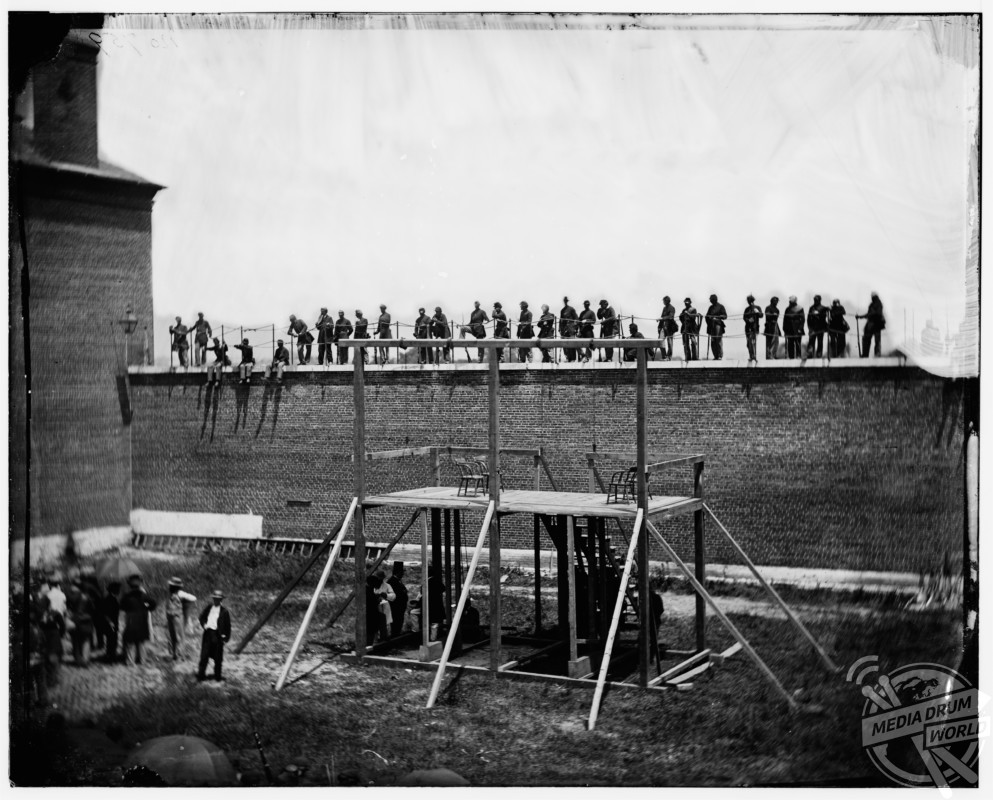
By Mark McConville
FASCINATING images depicting the brutal practice of execution have come to light in a series of harrowing pictures taken around the turn of the twentieth century, just days after the execution of white supremacist murderer, Mark Asay, which became the first execution to take place in Florida for 18 months.
The distressing pictures show Captain Henry Wirz being hanged in Washington DC, USA with the Capitol Dome in the background as well as other men being hanged around the United States.

Other gruesome photographs show the practice of execution extended around the world as Cuban prisoners line up against a wall to be shot, severed heads of Chinese criminals are left on stakes in a town centre and Italian soldiers wait to shoot two Arab spies in Tripoli in 1911.
The grim images act as a reminder of how brutal life used to be when the death penalty was still in force in nearly all countries of the world – yet in the 21st Century state the numbers of sanctioned killings are currently at their peak over the past three decades.

Capital punishment ended in the UK in 1965 when the The Murder (Abolition of Death Penalty) Act 1965 came into law, although the death penalty for murder survived in Northern Ireland until 1973. The Act replaced the penalty of death with a mandatory sentence of imprisonment for life.
The Act overlooked four other capital offences: high treason, “piracy with violence” (piracy with intent to kill or cause grievous bodily harm), arson in royal dockyards and espionage, as well as other capital offences under military law.

The death penalty was not finally abolished in the United Kingdom until 1998 by the Human Rights Act and the Crime and Disorder Act. However, the last executions in the United Kingdom were in 1964, for murder.
The death penalty is still commonplace in many countries including China, Iran, North Korea, Yemen and the USA, which is the only G7 country to still execute people.

In the latest figures provided by Amnesty International, at least 1,634 people were executed in 25 countries in 2015.
This is the highest number of executions recorded since 1989. Most executions took place in China, Iran, Pakistan, Saudi Arabia and the USA – in that order.
China remained the world’s top executioner – but the true extent of the use of the death penalty in China is unknown as this data is considered a state secret; the figure of 1,634 excludes the thousands of executions believed to have been carried out in China.
Excluding China, almost 90% of all executions took place in just three countries – Iran, Pakistan and Saudi Arabia.






